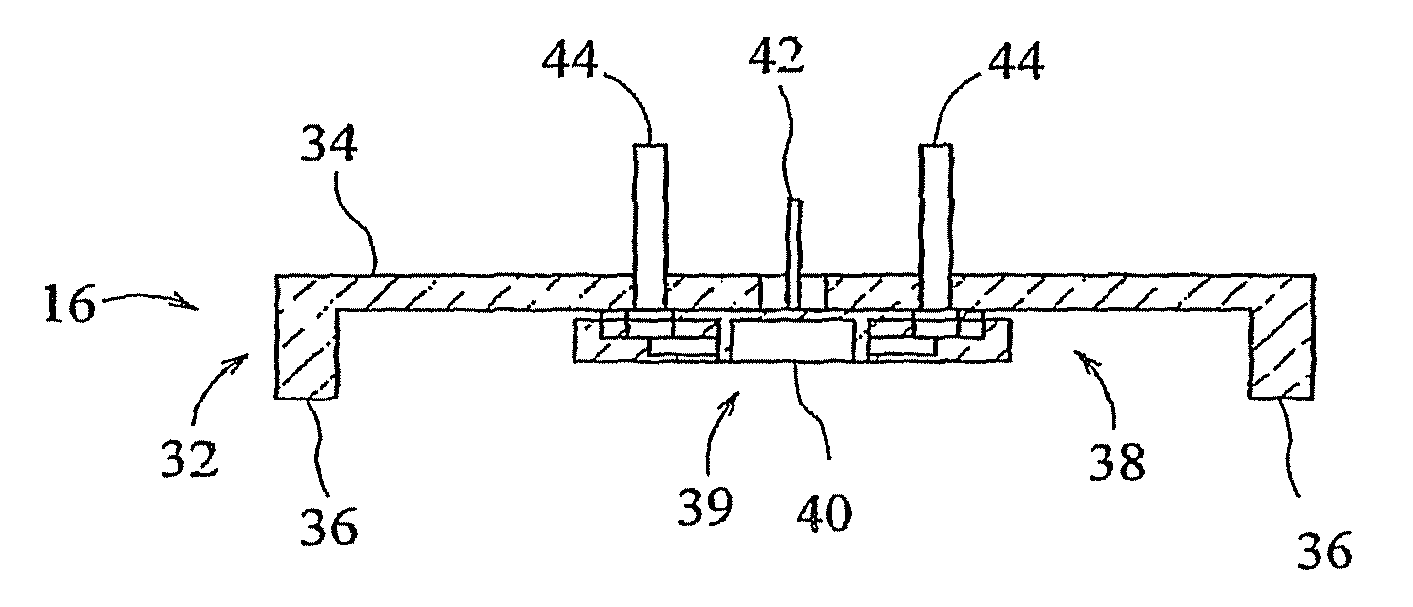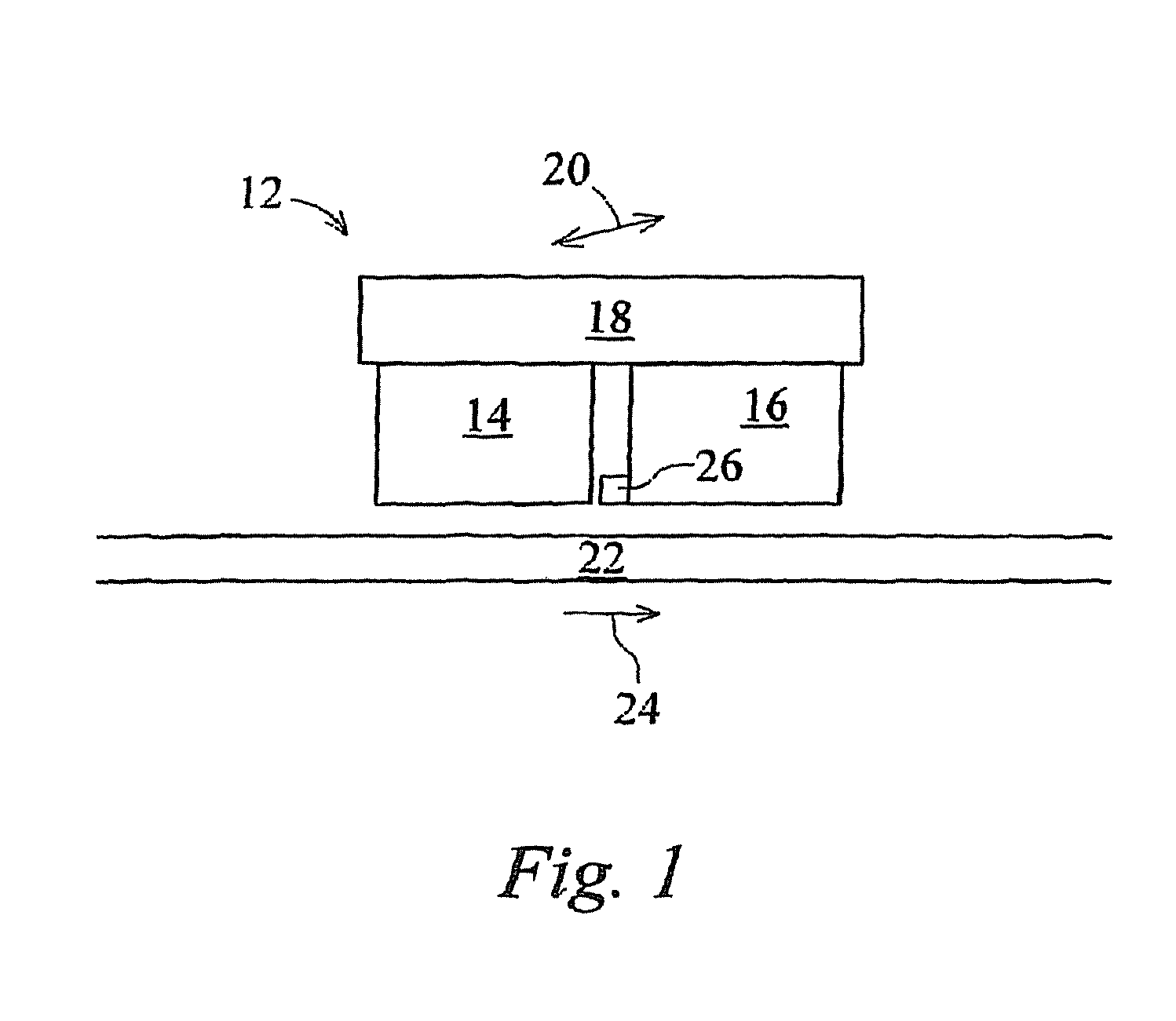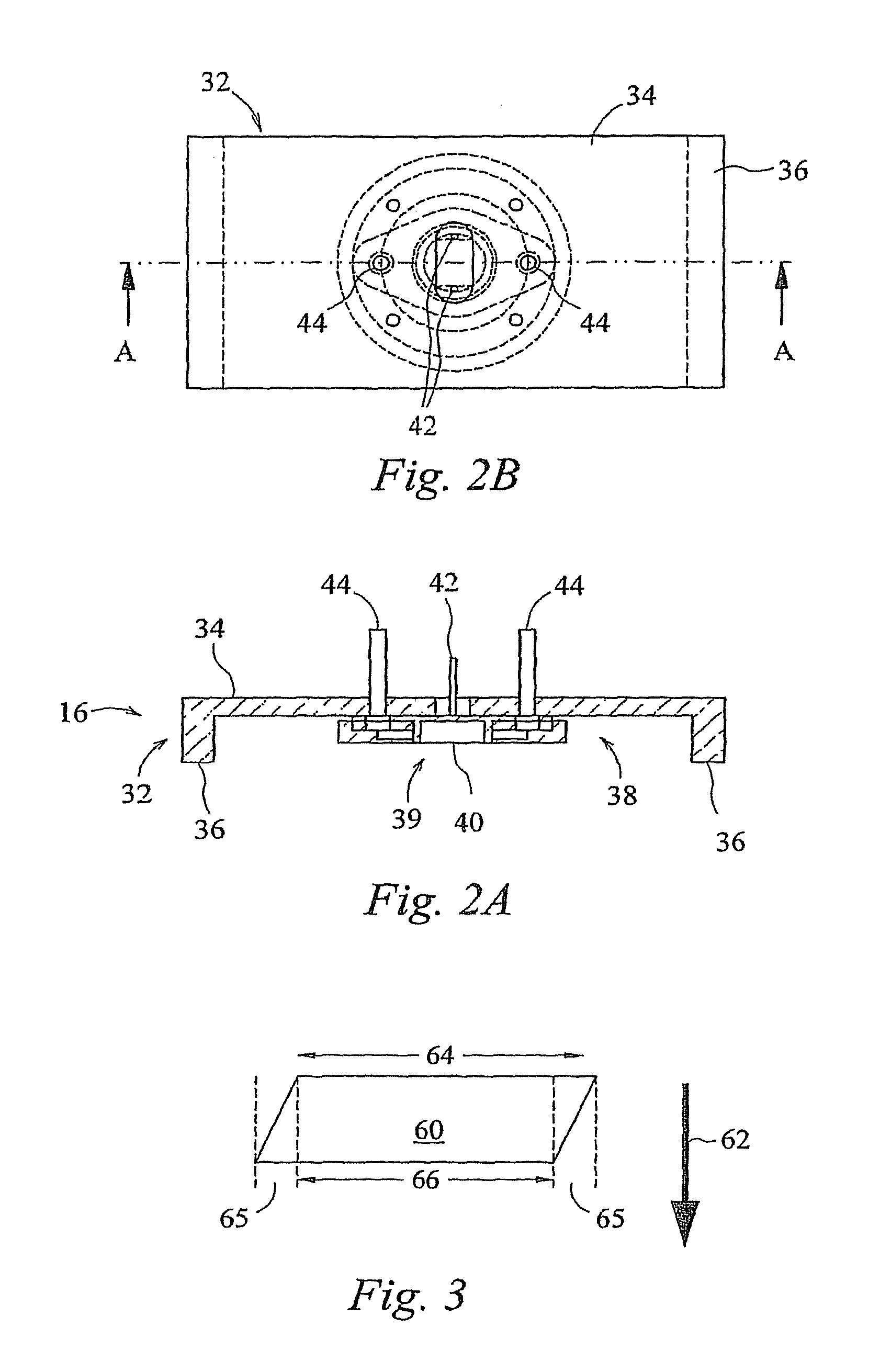Curing
a technology heat input, applied in the field of cure, can solve the problems of attractive methods, high heat input required to achieve rapid cure temperature, and lamp requires active cooling, etc., to enhance the reactivity of the system, enhance the spectral sensitivity of the photoinitiator in the ink to be extended, and optimise the reactivity of radiation curable ink.
- Summary
- Abstract
- Description
- Claims
- Application Information
AI Technical Summary
Benefits of technology
Problems solved by technology
Method used
Image
Examples
example 1
UV Curable Ink for Use with a 382 Nm LED
[0194]Ink Formula A:
[0195]Propoxylated neopentylglycol diacrylate 74.91 parts
[0196]Solsperse 32000 (dispersant from Avecia) 0.48 parts
[0197]Irgalite Blue GLVO (blue pigment from Ciba) 1.44 parts
[0198]Genorad 16 (stabiliser from Rahn AG) 0.12 parts
[0199]Rapi-cure DVE-3 (difunctional vinyl ether from ISP Europe) 15.0 parts
[0200]Lucerin TPO (photoinitiator from BASF) 8.0 parts
[0201]Byk 307 (defoamer from BYK Chemie) 0.05 parts
[0202]The composition was an ink having a viscosity of 16 mPas at 25 C. The ink was coated onto self-adhesive vinyl and was successfully cured under reduced oxygen environment when exposed to an LED source which emitted radiation having a peak wavelength of 382 nm. The LEDs used were EIS09-OPOA9-02 of Roithner Lasertechnik.
example 2
UV Curable Ink for Use with a 405 Nm LED
[0203]Experiments were carried out in the lab using a LED B95-66-60 source available from Roithner Lasertechnik and mounted in a housing which allowed nitrogen to be pumped through as shown in FIGS. 2a and 2b. The nitrogen source used was a HNG3-4B available from Hankison International. The use of such a source has the advantage that there is no net nitrogen liberated in the area of the printer, and that there is no need for a supply of bottled gas.
[0204]Such an arrangement did leave some residual oxygen in the nitrogen output, but it was found that the level of residual oxygen was low enough (<1%) to allow full cure of the ink using the conditions below:
[0205]
InksSericol UviJet ink (cyan, magenta,yellow and black)- a free radicalcuring inkLED Input power18 V 300 mAPeak emission405 nmNitrogen flow rate0.18 m3 / hrSpeed of curing assemblyI. Om / s relative to the substrateInk laydown on substrate18 g / m2
[0206]The arrangement was found to give full c...
PUM
| Property | Measurement | Unit |
|---|---|---|
| width | aaaaa | aaaaa |
| wavelengths | aaaaa | aaaaa |
| wavelength | aaaaa | aaaaa |
Abstract
Description
Claims
Application Information
 Login to View More
Login to View More - R&D
- Intellectual Property
- Life Sciences
- Materials
- Tech Scout
- Unparalleled Data Quality
- Higher Quality Content
- 60% Fewer Hallucinations
Browse by: Latest US Patents, China's latest patents, Technical Efficacy Thesaurus, Application Domain, Technology Topic, Popular Technical Reports.
© 2025 PatSnap. All rights reserved.Legal|Privacy policy|Modern Slavery Act Transparency Statement|Sitemap|About US| Contact US: help@patsnap.com



